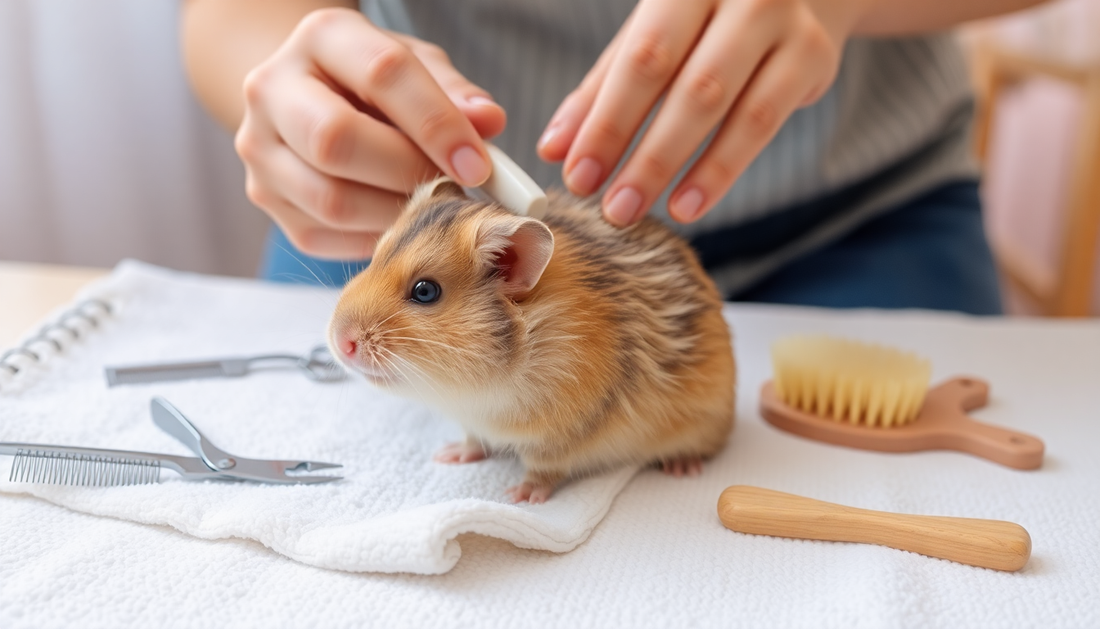
Hamster Grooming 101: What You Need to Know
As a proud owner of a furry companion, you know that keeping your hamster healthy and happy is a top priority. One crucial aspect of their care is proper grooming, which can help maintain their coat, skin, and overall well-being. In this comprehensive guide, we'll dive into the world of hamster grooming, covering essential techniques, tools, and tips to ensure your little friend looks and feels their best.
Understanding Hamster Grooming Needs
Hamsters are meticulous groomers by nature, but they may require some assistance from their human caretakers to maintain their pristine appearance. Unlike larger pets, hamsters have delicate skin and a dense, soft coat that requires gentle handling and specialized care. Neglecting their grooming needs can lead to various health issues, such as skin irritation, matting, and even infections.
The Importance of Regular Grooming
Regular grooming not only keeps your hamster looking their best but also helps prevent potential problems. By brushing their coat, trimming their nails, and cleaning their ears, you can:
- Reduce the risk of skin irritation and infections
- Prevent matting and tangling of their fur
- Maintain a healthy, shiny coat
- Identify any potential health issues early on
Establishing a consistent grooming routine is essential for the well-being of your furry friend.
Essential Grooming Tools
Before you begin grooming your hamster, it's important to have the right tools on hand. Here are some essential items you'll need:
- Soft-bristle Brush: A small, soft-bristle brush is ideal for gently brushing your hamster's coat and removing loose hair.
- Nail Clippers: Specially designed small animal nail clippers will help you trim your hamster's nails safely and effectively.
- Ear Cleaner: A gentle, pet-safe ear cleaner can be used to keep your hamster's ears clean and free of debris.
- Treats: Offering your hamster a small treat during grooming can help them associate the experience with something positive.
Remember to introduce these tools gradually and positively, so your hamster becomes comfortable with the grooming process.
Grooming Techniques
Now that you have the necessary tools, let's explore the step-by-step process of grooming your hamster:
Brushing the Coat
Gently brush your hamster's coat using the soft-bristle brush, taking care to avoid pulling or tugging on their fur. Start at the head and work your way down, using short, gentle strokes. Pay special attention to areas that tend to mat, such as the belly and behind the ears.
Trimming Nails
Carefully hold your hamster's paw and gently extend their toes to expose the nails. Use the nail clippers to trim just the tip of the nail, being careful not to cut too close to the quick (the blood vessel inside the nail). If you're unsure, it's better to err on the side of caution and leave the nails slightly longer.
Cleaning Ears
Dip a cotton swab in the pet-safe ear cleaner and gently wipe the visible part of your hamster's ear. Avoid inserting the swab too deeply, as this can damage the delicate ear canal.
Bathing (Occasional)
Hamsters are generally clean animals and don't require frequent bathing. However, if your hamster gets particularly dirty or has a skin condition, you can give them a gentle spot-clean using a damp, soft cloth. Avoid submerging them in water, as this can be stressful and lead to health issues.
Remember to always approach grooming with patience and positive reinforcement. Offer your hamster treats and praise throughout the process to make it a pleasant experience for both of you.
Grooming Frequency and Schedule
The frequency of your hamster's grooming routine will depend on their individual needs and activity level. As a general guideline:
- Brushing: 1-2 times per week
- Nail Trimming: Every 4-6 weeks
- Ear Cleaning: As needed, or every 2-3 months
It's important to be attentive to your hamster's coat and overall appearance, as this can indicate when they may need additional grooming attention.
Troubleshooting Common Grooming Issues
Even with the best care, you may encounter some challenges during the grooming process. Here are a few common issues and how to address them:
Matted Fur
If you notice matting or tangling in your hamster's coat, gently work through the area with the soft-bristle brush. If the mats are severe, you may need to seek the help of a professional groomer or veterinarian to safely remove them.
Overgrown Nails
If your hamster's nails appear long and curled, it's time for a trim. Be sure to use the appropriate nail clippers and take care not to cut the quick.
Ear Infections
Signs of ear infections, such as redness, discharge, or head tilting, require immediate veterinary attention. Avoid attempting to clean the ears yourself if you suspect an infection.
By addressing these issues promptly and seeking professional help when necessary, you can ensure your hamster's grooming needs are met and their overall health is maintained.
Conclusion
Proper grooming is an essential part of caring for your hamster's well-being. By understanding their unique needs, using the right tools, and following a consistent grooming routine, you can help your furry friend look and feel their best. Remember to approach the process with patience, positive reinforcement, and a commitment to your hamster's health and happiness. With the right grooming practices, you can ensure your hamster enjoys a comfortable, clean, and confident life by your side.



